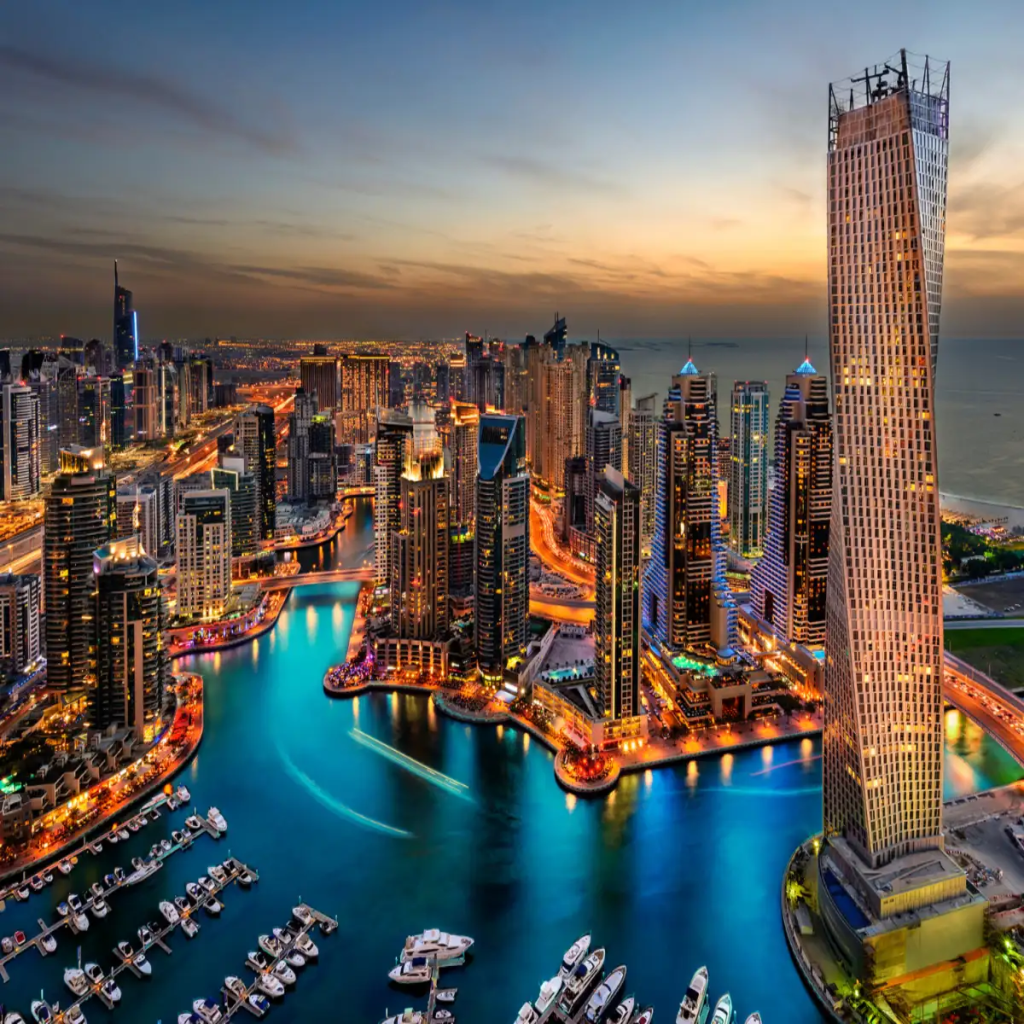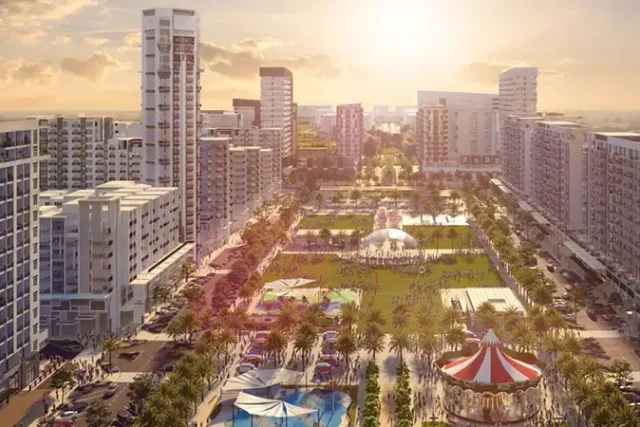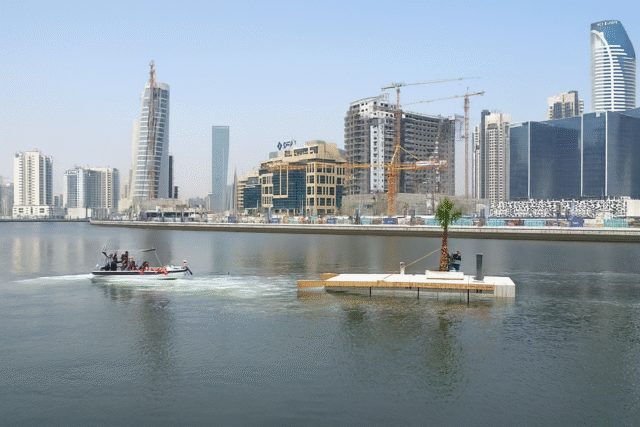
Dubai’s real estate market has been on a steep ascent. Data shows that real estate prices and sales values in 2025 are almost four times those in 2021. This dramatic increase is driven by several factors—economic, regulatory, demographic—and it has reshaped both investment dynamics and living costs in the city. Below is a breakdown of how steep the growth has been, what’s pushing it, what risks lie ahead, and what buyers & investors should watch out for.
Key Statistics: How Big Is the Climb?
Some of the headline numbers:
- From January‑September 2021 to the same period in 2025, real estate sales value jumped from AED 104 billion to AED 499.1 billion. That’s a 379.9% increase.
- Transaction volume in that span rose by about 266.7% (from ~43,200 deals to ~158,400).
- Apartments, villas, commercial plots—all sectors have seen strong growth. For instance, apartment sales value rose ~451.7% in the same period.
- Villa and plot sales surged too: villa values up ~302%, plot transactions rose significantly.
- Property (residential) price indices: comparisons to a base of January 2021 show villa and apartment prices well above that baseline. For example, median price per square foot rose from AED 889 in Q1 2021 to AED 1,563 in Q1 2025.
So, when people say “almost fourfold,” they’re speaking quite literally in terms of aggregate value (sales value), and in many cases, in terms of specific property type metrics as well.
What’s Fueling the Surge

The growth doesn’t happen in a vacuum. Several forces have been working together to push up demand, raise prices, and change the supply dynamics.
- Strong Investor Interest & Foreign Demand
Dubai has intensified its appeal to international buyers: through relaxed ownership laws, freehold properties, favorable tax environment (no income tax), and high visibility as a business/tourism hub. These factors have drawn in both private and institutional investors seeking returns. - Government Policy and Residency Incentives
Initiatives like the Golden Visa, longer‑term residency options, and other reforms have made Dubai more attractive to overseas talent and capital. This increases demand for housing, often in higher‑end segments. - Tourism and Population Growth
Dubai continues to attract millions of tourists each year, which bolsters short‑term rental demand. Meanwhile, expatriate inflows and natural population growth (plus people relocating because of work or lifestyle) push up demand for long‑term housing. The growth in both permanent and temporary residents puts pressure on the housing supply. - Limited Prime & Ready Inventory, Off‑Plan Popularity
Many buyers are looking for prime locations (waterfront, central districts, luxury villas, etc.). These locations often have limited supply. Also, off‑plan properties (properties that are not yet completed) have become very popular, partly because of more flexible payment schemes and sometimes lower entry costs. That pushes demand ahead of supply in many cases. - Macro Factors & Economic Stability
Dubai has benefited from large infrastructure investments, stable economic management, global investor perception of it as a safe haven (especially during uncertain periods elsewhere), and good growth in key sectors (tourism, finance, trade). These foundations support confidence in real estate as an asset class.
Impacts: Who Wins, Who Pays
Such rapid growth has wide downstream effects:
- Homebuyers (especially first‑time or local residents) are facing much higher entry costs. The jump in price per square foot, increased land/plot values, and premium for good locations make affordability a challenge.
- Investors have benefited strongly. Capital gains have been substantial. Also, rental yields in many areas are rising (especially where demand is strong and supply is lagging).
- Renters feel it too—rents are going up, particularly in high‑demand areas. For many, cost of renting has increased notably.
- Developers are reaping returns, but also facing challenges: securing land, input costs (materials, labor), regulatory approvals, and delivering on projects (especially in off‑plan schemes) in time.
- Urban planning and infrastructure are under pressure: transport, utilities, amenities must keep up with population growth and densification. Areas well connected to infrastructure benefit more.
Risks & Headwinds
With such rapid growth, some caution is warranted. Several risk factors could moderate the pace of increase, or even cause corrections.
- Oversupply
There are many projects under construction, and a large number of units expected to be handed over in 2025‑2027. If too many units come online without matching demand, prices may soften. Some analysts project possible correction of up to 10‑15% in certain segments due to oversupply. - Affordability Constraints
As prices rise, fewer buyers can afford prime locations or large villas. This may shift demand toward smaller units, peripheral locations, or more affordable communities. That can change which segments grow fastest. - Interest Rates and Financing Costs
Changes in global interest rates, tightening of lending criteria, or changes in mortgage availability could dampen demand. If financing becomes more expensive or harder to obtain, some buyers may delay purchases. - Economic & Geopolitical Shocks
Dubai is not immune to global slowdown, energy price swings, or geopolitical instability. Any global financial stress could affect expatriate inflows, tourism, and investor sentiment. - Regulatory Risk & Speculation
If regulators perceive overheating, there might be intervention (e.g. cooling measures, higher fees, stricter requirements). Also, speculative buying (buying just to gain from price rises, not for use or rental) can inflate prices unsustainably.
What to Expect Going Forward

Given the present momentum and the risk factors, here are plausible scenarios for the near‑to‑medium term (rest of 2025 through 2026):
- Continued growth, but more moderate: price increases may persist, especially in popular, well‑connected areas, though the rate may slow down. Year‑on‑year gains may be less steep than recent peaks.
- Price correction in some segments: oversupply in peripheral or less desirable areas might bring price adjustments. In prime locations, supply constraints may limit correction.
- Shifts in buyer preference: smaller units, more affordable communities, or off‑plan properties might see more attention. Locations with strong infrastructure (metro, roads, amenities) will likely command premium.
- Higher financing costs may affect buyers’ ability to take large mortgages, pushing some to cash purchases or more modest investments.
- Policy & regulatory adjustments may arrive. For example, in permitting, developer accountability, project delivery schedules, or fees/taxes to balance demand and safeguard consumer interests.
Advice for Buyers & Investors

If you’re considering entering Dubai’s property market now—or expanding your portfolio—here are some tips:
- Do your due diligence: Check developer track record (especially in off‑plan projects), confirm handover timelines, and understand the payment schedule.
- Location matters: Areas with good infrastructure, connectivity, amenities tend to outperform. Waterfront, centrally located, and luxury developments tend to see stronger value retention.
- Factor in all costs: Not just purchase price, but maintenance, service charges, financing costs, registration fees, and potential rental or resale value.
- Understand demand trends: For example, are you aiming for rental yield (short‑term or long‑term), capital appreciation, or both? Trends in tourism, population growth, regulatory incentives can heavily influence which properties perform best.
- Plan for risk: Be aware of potential supply surges, regulatory changes, or market corrections. Having liquidity or exit options helps.
Conclusion
Dubai’s real estate market has transformed in the past 4‑5 years. From 2021 to 2025, the value of property sales, price per square foot, and transaction volumes have gone up by multiples—hence the “almost fourfold” increase in many respects. Strong demand, investor interest, policy support, and supply constraints in prime areas have combined to create this surge.
But as with any market that grows rapidly, the higher you climb, the more carefully you need to watch the rope. Oversupply, financing risks, shifting buyer preferences, and global economic headwinds could all moderate or reshape the trajectory.
For many investors, there is still opportunity—but picking the right segment, location, and timing matters more than ever. If you’re considering stepping in, it’s worth combining optimism about growth with a careful, informed approach.





Leave a Reply